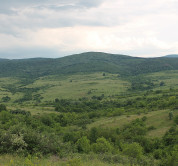
The invertebrate soil fauna of the Balkans is remarkably diverse, comprising a large proportion of Balkan endemic species. Through their relatively high spatial and ecological isolation, multiple adaptations for underground life and the inclusion of numerous relict, neoendemic or polymorphic species with unclear taxonomic status, makes cave- and ground-dwelling invertebrates an excellent model to study the processes driving the origin and formation of species. By combining DNA barcoding, statistical and morphological approaches, our project tackles the phylogenetic evolution and the pathways of species formation in key endemic cave- and ground-dwelling spiders, myriapods and coleopterans in Bulgaria. We also provide an integrated, cybertaxonomic framework to serve as a standard in zoological and phylogenetic studies in Bulgaria and the Balkans.
As a result of the project, over 25 species of invertebrates (spiders, beetles, and centipedes) from Bulgaria, Greece, Turkey, Montenegro, North Macedonia, Romania, and others have been described. Revisions and modern descriptions of supra-specific groups have been made, utilizing contemporary methods to obtain information supporting and facilitating taxonomic and nomenclatural decisions – DNA analysis, database utilization and creation, 3D models, and others. Two large online databases have been created – Spiders of Balkan Peninsula and The Coleoptera (Insecta) of Bulgaria. A molecular phylogenetic analysis of the Dysderoidea superfamily has been conducted. Data on protected species such as Rhysodes sulcatus, Osmoderma eremita s.l, and Morimus asper s.l have been summarized. Knowledge regarding their overall distribution, habitat preferences, and threats has been significantly improved. DNA methods have been applied for the first time to determine the main population lines, potential dispersal routes, and genetic diversity of the Morimus asper population in Bulgaria. The scientific results have been published in over 29 publications and presented at 4 international conferences, with wide coverage in social and other media, including internationally.
- National Museum of Natural History, Bulgarian Academy of Sciences (NMNHS)
Contact person: Prof. Pavel Stoev
Project website: http://cyber-taxonomy.com

Vahtera V, Stoev P, Akkari N (2020) Five million years in the darkness: A new troglomorphic species of Cryptops Leach, 1814 (Chilopoda, Scolopendromorpha) from Movile Cave, Romania. ZooKeys 1004: 1–26. DOI: 10.3897/zookeys.1004.58537
Kostova R, Borissov S, Bobeva A, Bekchiev R (2024) At a crossroads: Genetic lineages and dispersal routes of Morimus asper (Sulzer, 1776) s.l. (Coleoptera, Cerambycidae) in Bulgaria. Biodiversity Data Journal 12: e116619. DOI: 10.3897/BDJ.12.e116619
Bellvert A, Dragomir D, Alireza Z, Arnedo MA (2024) Integrating museum collections and molecules reveals genus-level synonymy and new species in red devil spiders (Araneae, Dysderidae) from the Middle East and Central Asia. European Journal of Taxonomy 921(210): 235. DOI: 10.5852/ejt.2024.921.2429